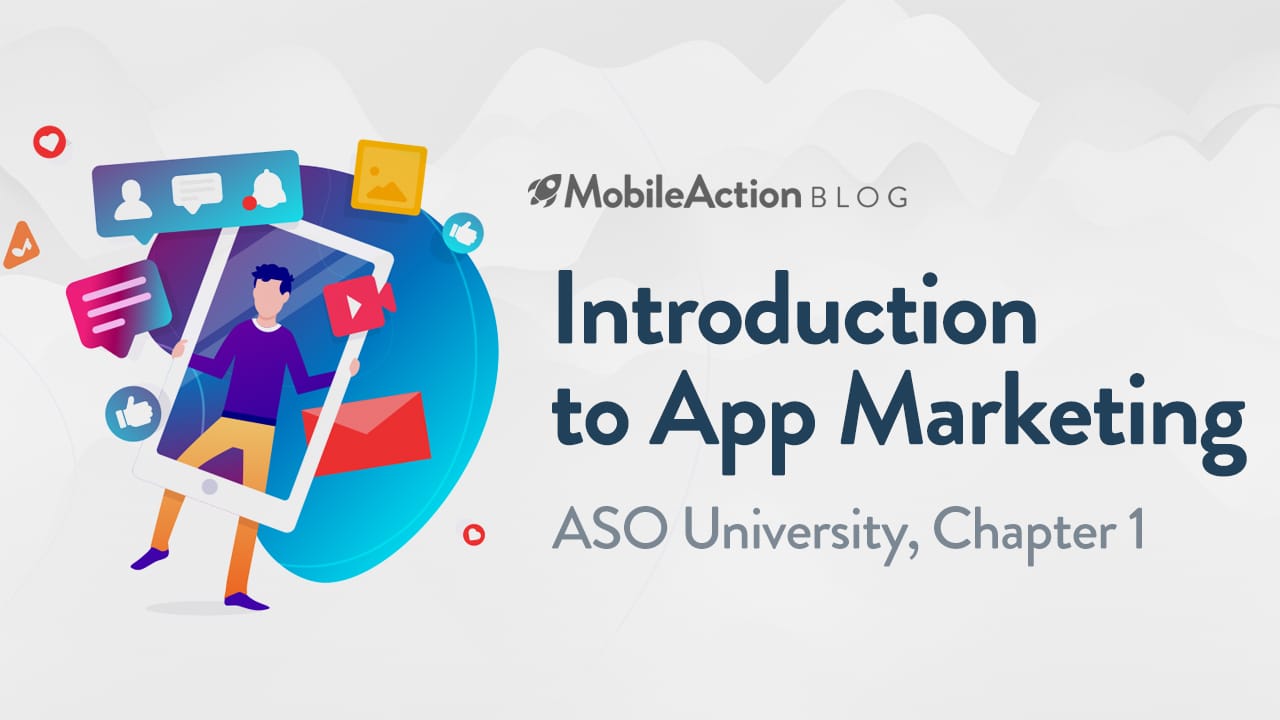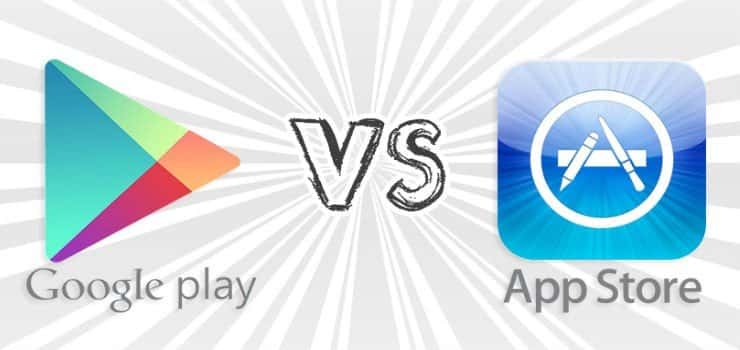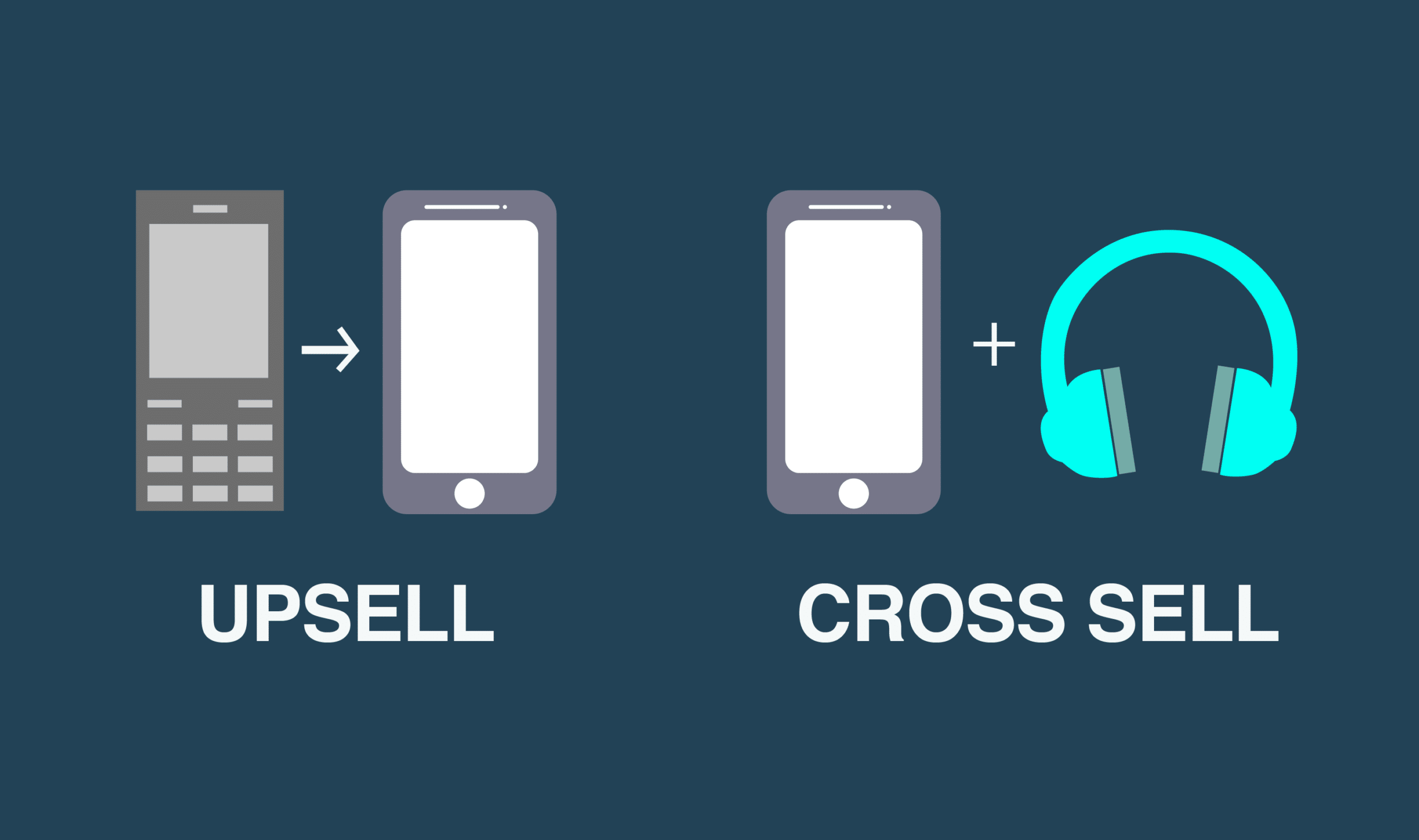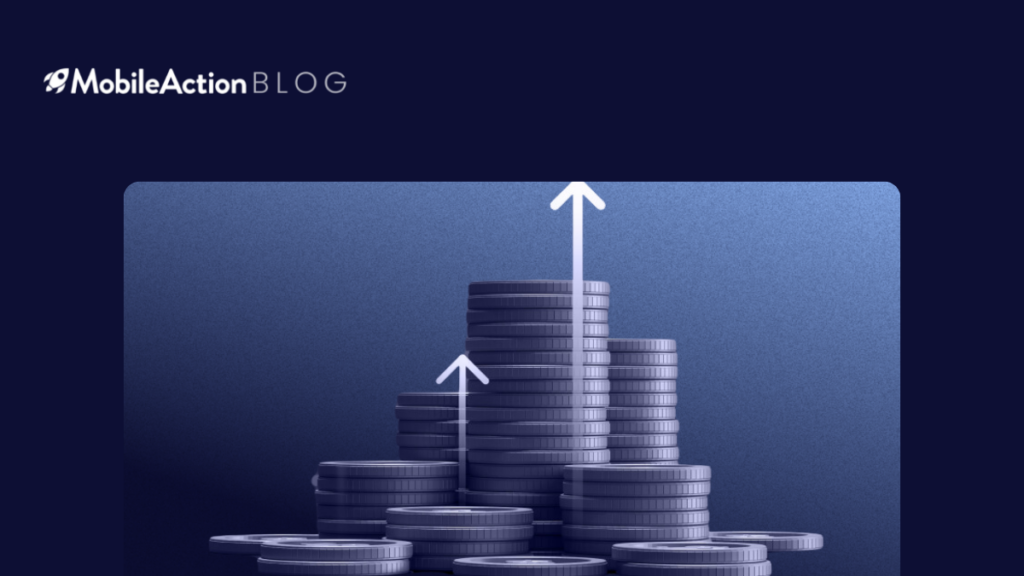Introduction to App Marketing
A great product is always the backbone of a successful business. No matter the industry, the first step for a successful and strong business comes from a great product. Without it, no business has the chance of striving for too long.
However, despite being the backbone of a successful business, a great product is rarely enough for success. Great products often can sell themselves, but they do not have their own voice to reach to their audience. That is the sole reason a field such as marketing exists. To be the voice of a great product and tell its story to the world.
The newly emerged Mobile App Industry is no different. In a vast marketplace where the borders are only defined by the two major app stores and their rules, great products have a very high chance of getting lost in the app stores. That’s why a proper app marketing strategy is as important as having a high-quality app.
1. The Two App Markets
As highlighted above, the entire Mobile App Industry is defined in the boundaries of the two app markets: the Google Play Store & the Apple App Store. App marketing, therefore, is again defined by these two app stores.
Both app stores have their unique structure and rules but the basic ideas are the same: a common marketplace where the apps are listed and a common marketplace where the users choose the app they want to use and download.
2. Key Points About App Marketing
The entire mobile application industry is based on the two main app stores and mobile applications in those markets. As simple as it might look, there’s more than the app stores and apps to App Marketing. So, let’s have a look at the key points about App Marketing.
a.App Units
These signify the number of unique account ids that have downloaded your app. So, if someone downloads an app and then uninstalls it only to re-install it under the same account it counts as 1 app unit.
b.Installs
Is the number of times your app was downloaded and opened for the first time. Re-installations are counted but updates aren’t. And it only appears in your analytics once the app is opened for the first time.
c.Categories & Category Rankings
Both app stores are divided into categories that will make it easier to navigate through the app stores as there are too many apps to choose from. Not only these categories divide apps based on their purpose and content they are also listed based on their Category Rankings.
So each app has their individual category ranking that shows their rank in the Top Charts of that category. Your category rankings are determined by your download numbers, average rating, and keyword rankings.
d.Keywords & Keyword Rankings
When dealing with the app stores, the keywords become one of the most important factors that every app marketer should be familiar with. Basically, your app is matched with keywords you choose to be ranked on, this is significantly different between Apple App Store & Google Play Store.
However, the basic idea is the same. When someone searches for an app, they use a keyword that they think will help them find the app they are looking for. Your purpose here is to be ranking as high as possible for such potential keywords. In which spot you will be in for a keyword is determined by your Keyword Ranking.
Basically, it shows you where you stand in the search results for a keyword. For example: if you are ranking for 17 for a keyword, you will have the 17th place in the search results when someone searches for that keyword.
e.Conversions
When someone finds your app in search results, taps on it to view your listing page and finally downloads it, that’s called a Conversion. More importantly, the rate of total app page visitors to the number of downloads indicates the conversion rate for that app.
Conversion Rates are quite important to measuring the success of your app marketing strategy as
they basically show you how many potential users are actually becoming current users.
f.Top Charts
Top charts can be called as the leaderboards of the app stores. Apps are listed in order to their rankings in the overall app stores or based on their categories. The Top Charts are further divided into Free, Paid & Grossing subcategories where free & paid apps are compared separately.
Moreover, the grossing category has a look at the total revenue an app is making and lists them based on their revenue. This applies to both paid and free apps.
g.Reviews & Ratings
Reviews & Ratings are often overlooked by app marketers. However, they are vital to measuring your apps’ success and are also a strong factor that determines your rankings. You can benefit from reviews & ratings immensely as they both affect your conversion rates and rankings at the same time.
h.App Listing Page
The App Listing Page is drastically different in both app stores but the basic idea remains the same. The App Listing Page is like the package of your app where you give relevant information about your app and try to convince the potential user to download it.That’s why your App Listing Page deserves quite a bit of your attention in order to have a high conversion rate which will help you have more users that will bring money to your app.
i.Search Query
Search query refers to the body of text someone types in the search bar. These can be single words or phrases. When someone is in need of a free calculator for their mobile phone, they will most probably search for it as ‘free calculator app.’ That is basically a search query that is aimed at discovering a free app that functions as a calculator.
3. Methods of App Marketing
As important as it is, App Marketing is not a singular practice. Instead, there are many ways of doing App Marketing, most of them complimentary while some much more important than the others.
a.App Store Optimization
App Store Optimization, accepted by many, is one of the most effective methods of doing App Marketing.
In its essence App Store Optimization is focused on the practices within the app stores. Basically, the aim of App Store Optimization is to make your app more visible in the app store by making it easier to be discovered and more intriguing to download.
The more you do ASO, the more visible your app becomes and starts climbing through the rankings to reach to the top of the charts and become a huge success.
Doing ASO can be viewed as a two-step process. The first one is to increase your visibility in the market through optimizing various assets of your app that will increase your ranking in search results for some keywords.
This step is all about optimizing keywords. Which keywords to choose, where to use them, how they perform. These are the questions you will be asking yourself during this step. More on that shortly.
The second step to take while doing ASO is to increase your conversions. When your app is easily discovered it won’t automatically translate into organic downloads. To ensure that your efforts to make your app visible doesn’t go to waste, you have to also optimize various assets on your apps’ listing page to make it more intriguing to download.
This step requires some testing and assistance from design professionals as it will all be about the creative assets such as the app icon, screenshot and much more.
b.Performance Marketing
Performance Marketing is a way more aggressive method compared to App Store Optimization. The results can be more immediate. However, you will see its results on your credit card statement immediately as well.
Usually, Performance Marketing refers to various channels where you run ads on such as Facebook Ads, Youtube, Google Adwords, various social media platforms and ad platforms.
Just like in any other industry, the mobile application industry is also where running advertisements thrive. There are many different ways to advertise your apps.
You can run ads for your app on the web, within the app stores, within other apps, and on social media. However, keeping in mind that advertisements are a more complementary form of App Marketing. They shouldn’t be viewed as the sole way of marketing your app.
Advertisements are a good way to establish a brand identity and present your app to your ideal user base and perhaps make them talk about it. Having a strong brand identity and being widely known is always good for your app.
However, running ads can be costly and when taking into consideration that %65 of downloads on the app store comes from a search, running ads only can cover a small portion of your marketing efforts.
When it comes to advertising your app outside of the app stores and other apps, there are a plethora of choices that provide you the opportunity to run ads on various websites. You can run banner ads on those websites with a link that will take the user to the download page.
By running targeted banner ads, you can make sure that your ads are tunneled towards the appropriate audience. That way your ads have a higher chance to translate into installs as only the relevant people are exposed to your app.
The best example to that can be how Youtube ads change from user to user. A woman who watches a lot of makeup videos or a young person who is constantly watching videos related to video games will see drastically different ads on Youtube.
You can get similar results on social media as well. Based on your interests, you will see ads on Facebook, Instagram etc. that are tunneled towards you.
You can also boost your download numbers and app store rankings by running paid store ads in both the app store. For the Apple App Store you have Apple Search Ads and for the Google Play Store, you have Google Play Search Ads. Basically, when someone searches for a keyword that your ad campaign is related to, your ad appears at the top of the search results with a small indication to show that it’s an ad. We have our own separate dashboard dedicated to Apple Search Ads, make sure to read this blog post about all the features we have and Apple Search Ads in general.
With store search ads, you can also boost your organic downloads and rankings as well as these ads are directly inside the app store and contribute to your organic growth and rankings.
c.Content Marketing
Content marketing is in a bit different spot here. You can start doing it before your app is launched and keep doing it afterward. It’s considered as a cheap way of marketing an app.
However, it requires a great deal of manual work and creativity. More often than not, the effects of content marketing can be more subtle. Usually, getting results from Content Marketing can take up to 3 months as the more content you create the higher your web SEO ranking will go. The higher you appear in Google search results the higher the chance to reach to people.
Content marketing usually revolves around creating your own blog and filling it with relevant content. These can be news about your app, some useful tips about the general topic of your app, case studies, user testimonials and much, much more!
It takes quite a while for the content marketing efforts to bear fruit but once it starts doing its job, it can contribute greatly to the organic growth of your app.
d.Influencer Marketing
Influencer Marketing is one of those strategies that if you get it right, your apps’ success will soar through the sky. While it’s viewed as a new form of marketing it has been out there for quite a while actually.
It was the domain of big corporations and celebrities. That has obviously changed as social media started to occupy too much place in our lives. With new channels of communication and new social media stars, app influencer marketing has become an effective way for products that have a niche and are targeted to a smaller group of people.
In its core, influencer marketing is getting people who are renowned in the subject to talk about your product and promote it. Getting a youtube gaming star to talk about your mobile game can be as powerful as getting featured in the app store. However, getting noticed by such personalities can also be challenging as you have to have something different to catch their attention.
Influencer marketing is also a great way to spread word-of-mouth and get people talking about your app. Word of mouth has been the oldest and to this day is one of the strongest channels of marketing.
You can check one of our case studies about how much of an impact influencer marketing can have on your growth.
e.Cross-Selling
Now, this method of marketing an app might not appeal to everyone as it requires you to have another app or a product on a different platform such as on the web. But if you do have the opportunity to do cross-selling, than you should definitely do so!
Cross-selling is a great way to transport your already loyal users for free to one of your other products or platforms. These users will usually be of high quality and will have higher retention rates and a higher propensity to spend money on your app.
A great example can be the action based card game of Blizzard Entertainment, Hearthstone. When it was first launched it was a pc game only playable on a computer. While on the PC platform the game had around 7 million players. However, once Blizzard announced that Hearthstone was available on mobile devices as well, the player count skyrocketed to a whopping 20 million in a matter of months.
As cross-selling works between platforms, it quite effective between different apps as well. Especially in the case of games. As games usually face a content drought after a while, retaining users becomes increasingly difficult. That’s why cross promoting solves two issues at once. It helps you retain your user base while also providing a constant flow of traffic to your new app.
4. Why is ASO Important?
While all of the marketing strategies are helpful for your overall growth and are advised, ASO has a special spot amongst them.
So why is ASO important? Why have we prepared a course specifically for ASO instead of App Marketing in general?
Let’s have a look, shall we?
-ASO provides the most long-lasting growth for your app business. Making your app easily discovered in the app store is the most efficient way to get downloads. Because once you start ranking you get the downloads automatically. You only need to maintain or improve that ranking by simply keep doing ASO. There is no fear of the effects of ASO wearing off unlike in performance marketing or black hat ASO.
-Although being a bit more complicated than other methods, is easier to pick up and start doing. Doing the perfect ASO might require a good deal of experience and superior knowledge about ASO. However, even a small scaled ASO effort can work wonders. You will be surprised how much benefit you can get from doing a basic level of keyword optimization. Also, the skill floor is relatively lower than, let’s say, content marketing.
-Directly targets the app stores where your app is downloaded. With ASO, your efforts for promoting your app are targeted directly to the habitat of the apps, the app stores. By ensuring that your app is in a good spot where the apps are downloaded, you are influencing your apps’ success first hand.
-Discoverability is the strongest download bringing factor. Making your app easily discoverable in the app stores is the best way to get downloads as when people search for an app like yours, they will see your app as well.
-Brings organic installs, users who come through organic installs have a higher retention rate. ASO brings you organic traffic. So, your app will be constantly exposed to users who are interested in apps like yours. These organic users usually become loyal users who keep using your app and are more likely to spend money on your app that other users.
-Increases your rankings gradually and allows you to maintain a steady growth instead of a short-lived burst. You might not get the rapid increase in your rankings as you would from more aggressive methods, but your results will last much longer than other methods.
So, that’s all we have to talk about in this chapter. In the next chapter, we will have a closer look at the topic of App Store Optimization in general. We will cover the basic components of App Store Optimization and prepare ourselves for the following chapters which will be more specific in their scope.








